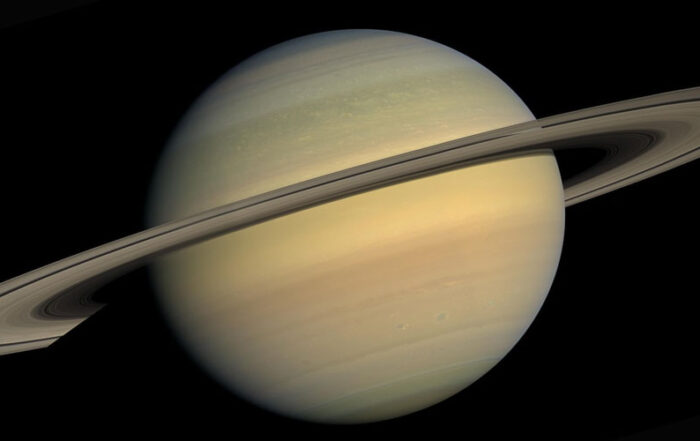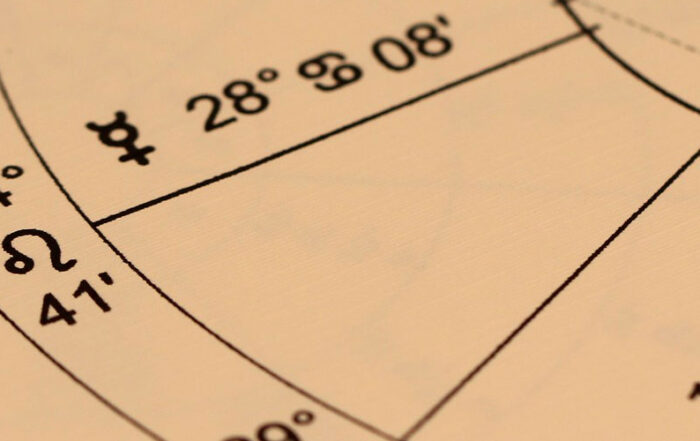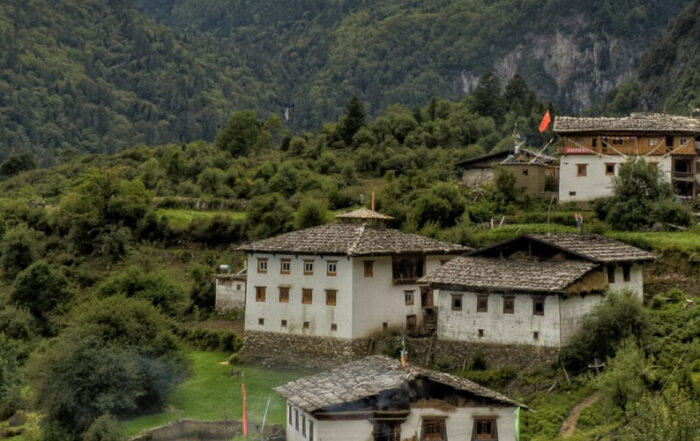Worship and reverence offered to feminine face of ‘God’ or the absolute reality date back as far as the Rig Veda. However it was not until the 5th or 6th centuries, coinciding with the roots of the Tantric tradition, that we see a full text and complete traditions of goddess worship. In these traditions we can clearly see the essence of reality revered as feminine in nature.
In contrast to the older vision of Brahman, the formless absolute, seen and revered in more masculine expressions. Such as Indra, Shiva, Brahma, Vishnu, Agni, for instance.
However, in around the 3rd century appeared a text known as Markandeya Purana. One of the eighteen major puranas. Sometime around the 5th or 6th century CE 12 chapters appeared at the end of Markandeya Upanishad.
Taken by themselves these chapters make up the text known as Devi Mahatmyam. Devi Mahatmyam is a profoundly devotional text. In it, for example, the formless absolute, or God without form is worshipped as unmanifest potential to create. Mahalakshmi, the feminine face of God.
The manifest aspect of God is also seen as feminine. In parallel to the Trimurti structure (link to shiva) we see here the Tridevi structure. Mahasaraswati as the creator, thus associated with the rajoguna. Mahalakshmi (the same name as the formless essence of relality) as the sustainer, associated with satvoguna. And Mahakali as the destroyer, associated with tamoguna.
The Devi Mahatmyam details the stories of each of the tridevi in the form of epic battles. The most well known of these battles occurs in the second chapter of the text. It details a battle in which the demon known as Mahishasura. Above all, the story clearly shows the superiority of Shakti, the feminine principle.
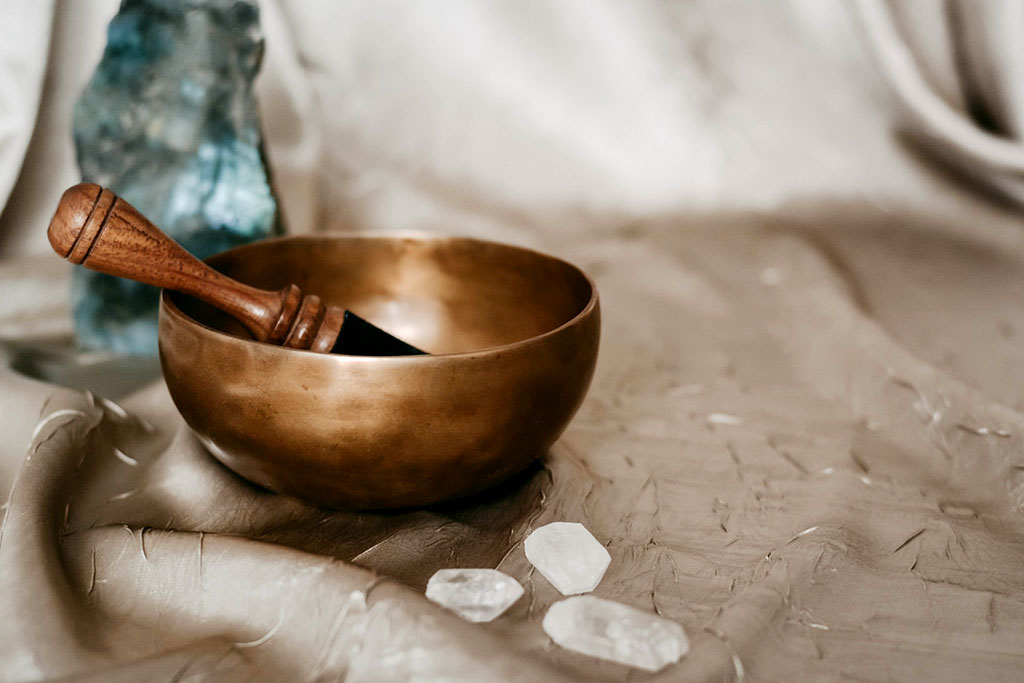
The Story of Durga and Mahishasura
The king of the Asuras Rambha mated with a female buffalo. Thus a child was born who had many special powers, being half demon, half buffalo. King Rambha named him Mahishasura (Mahish means buffalo).
While Mahishasura was growing up he witnessed many bitter wars between the Devas and tha Asuras, with the latter usually loosing. This bothered him and he decided he wanted to become powerful enough that no God could defeat him.
So he began years of penance and austerity for the purpose of obtaining such powers. Eventually the power of his penance attracted the grace of Lord Brahma. Lord Brahma then granted him the boon that no male, whether God or human could defeat him. That only a woman could defeat him. A feat he ignorantly assumed impossible, being such a big powerful male demon.
Thus he waged war against the Gods. The asuras ran rampant over the earth, looting and killing anyone who got in their way. The Gods went to war but even the powerful weapons of Lord Vishnu were powerless against the mighty demon.
Eventually the desperate Gods Shiva, Vishnu and Brahma decided that they would have to combine their powers. They created a woman, more powerful than the 3 of them combined. By concentrating their will together on the image of such a powerful woman they were successful. They created Durga the feminine face of God, so that she could accomplish what they themselves could not.
A huge fiery pillar of light appeared. Out of this immense power each of the Gods created various body parts, adornments, clothing etc. until they had crafted the mighty Goddess.
Then they decided to give her their most powerful weapons. First she recieved the Charka of vishnu, the trident of Shiva and a kamandal of ganga water from Brahma. Then from Agni, Vayu and Varuna respectively, the Goddess received the Sadagni, a bow with unlimited arrows and a mighty conch with ever blooming flowers.
Next, the God Indra gifted her a thunderbolt. Then Vishwakarma, an axe. Tvashta then offered, the invincible mace kaumodoki. And Surya offered blinding rays. Lastly, Yama, a staff and Kuber a cup of wine.
Finally then, the God of the Himalaya gifted her the Lion upon which she rides. They named the great Goddess Durga. Subsequently, without missing a beat, the great Goddess Durga went off to challenge the vicious asura Mahishasura.
Not surprisingly, hearing of this challenge Mahishasura scoffed. But soon enough the Great Goddess defeated all of his most respected warriors. Mahishasura then lost his temper and flew into a rage. A nine day battle ensued, of which Durga was the victor.
For this reason, Indians still celebrate Navratra, in which the 3 aspects of Mahalakshmi are worshipped.
The Tridevi – The Feminine Faces of God
As mentioned above, the Tridevi describes the Hindu trinity with a twist. The divine acts of creation, sustenance and dissolution are personified in the feminine form. Those forms are as follows:
MahaSaraswati – The first the feminine face of God
May the waters, the mothers, cleanse us, may they who purify with butter, purify us with butter, for these goddesses bear away defilement, I come up out of them pure and cleansed.
As the first the feminine face of God and first devi in the trinity, Saraswati represents the creative impulse. The fiery power that motivates, moves and mobilises energy into action. As such she is associated with the Rajoguna. It can be an impulsive quality, it is for this reason for instance, that we often see Brahma (the masculine counterpart of Saraswati) making mistakes by acting before thinking about the consequences.
MahaSaraswati generally represents purity and refinement. As such she represents an interest in the more refined aspects of life. Such as creativity, artistic expression, higher learning. Consequently, she is a powerful communicator and has command of the spoken and written word. Insofar as it is a medium for the expression of high truth, beauty and wisdom.
Saraswati is typically depicted with four arms. She holds a book representing wisdom and learning. The rosary that she carries symbolises the spiritual power attained by her devotees. Her water pot is the symbol of her discernment, the capacity to know ‘right’ from ‘wrong’.
However, the most distinctive and iconic of the adornments of Goddess Saraswati is the large guitar-like stringed instrument that she carries. This is the Veena, a classical instrument in Indian music. Her carrying it symbolises excellence in the creative arts and sciences. Including any kind of expression (music, art, poetry etc.) that brings harmony.
MahaLakshmi – The second the feminine face of God
Through illusion, A person can become disconnected, From his higher self, Wandering about from place to place, Bereft of clear thought, Lost in destructive behavior. It matters not how much truth, May shine forth in the world, Illuminating the entire creation, For one cannot acquire wisdom, Unless it is experienced, Through the opening of the heart.
The consort or counterpart of Vishnu is Mahallakshmi. Like Vishnu, she represents the sattvaguna. The sustaining principle of existence. She is then, the complete acceptance and love that sees perfection and beauty in all things as they are. There is, therefore, no need or impulse to improve or be different, simply to love. In itself, this love is a transformative power.
From Goddess Mahalakshmi we can learn the all important lesson in any healing, or growth process. Acceptance, genuine and complete acceptance is the first step to transform anything.
Lakshmi is commonly worshipped to engender the energies of wealth and abundance in ones life. Of course, material wealth and comfort are desirable and to an extent necessary for most people.
However, it should not be overlooked or forgotten that the thirst for external wealth is never truly quenched through material acquisition. True abundance is an inner state of being that ideally overflows into what we do. It is not the result of actions.
The internal state of complete abundance and wealth can be felt even in situations of physical lack or poverty. This is the true meaning of Lakshmi.
Goddess Lakshmi is typically depicted holding lotus flowers, with which is she closely associated. The Lotus represents various things. Mainly it signifies the purity that is associated with Lakshmi.
MahaKali – The third the feminine face of God
O Mother-Fire! Thy storm-eyed ken Tortures my eyeless fate. Before me shine all wonder-ways Of thy immortal Gate. The face of rapture thy stroke unveils. Matchless forever Thou art To make us reach the Peak unknown, The One’s all-embracing Heart. The fount of Power at thy Feet abides. Thy cosmic dance of Noon Throws fast on earth the nectar-floods Of snow-white fire-pure Moon.
Kali is the consort of Lord Shiva. As the representation of the Tamoguna within this trinity she represents the dissolution of all things into their essence. This can be seen as death, it can also be seen as the process of rebirth. Alternatively it is the potential of ignorance to be dissolved into wisdom.
She is often seen as a menacing force as she represents the powerful and potentially destructive power of the feminine. Hoever this is a misunderstanding. Kali represents love. The specific aspect of love that calls us to forget or leave behind the fetters of the mind.
Losing interest in material life (thus dissolving or potentially destroying those interests) allows the absorption of the mind in its source. This might be scary but it is not bad. This indeed is the foundation of the spiritual journey.
Mahakali carries a curved sword, used for chopping heads (egoic patterns). She also wields a trident, just as her consort Shiva. This trident has many meanings and significances, usually connected with the various trinities, the 3 common states of consciousness (waking, dream and deep sleep). The Trimurti or Tridevi etc.
The severed head, gruesome as it may seem, represents desire, craving and aversion. The blood dripping into the skull cup represents the transmutation of these apparent limitations into the path itself. Essentially into wisdom. This is the foundation of the tantric path to liberation.
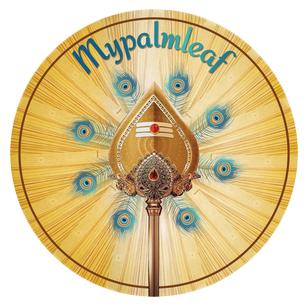
About My Palm Leaf
The legends say that thousands of years ago, a group of Indian sages perceived the lives of people living throughout all ages and wrote them onto the Palm Leaves. These manuscripts are stored in temple libraries all over the south of India.
We help you to find your manuscript, have a reading online and receive the guidance of the sages. This guidance can assist you to overcome obstacles in your life, and understand your life from a higher perspective.
